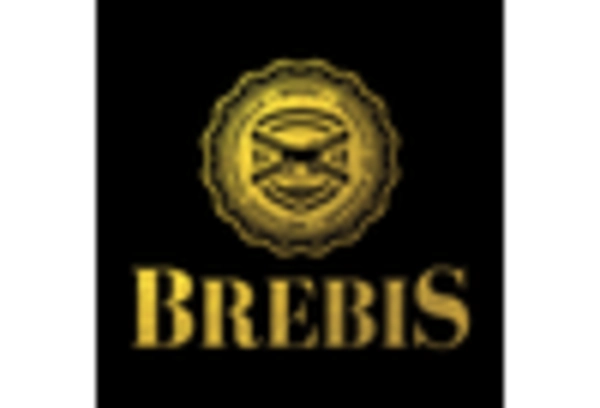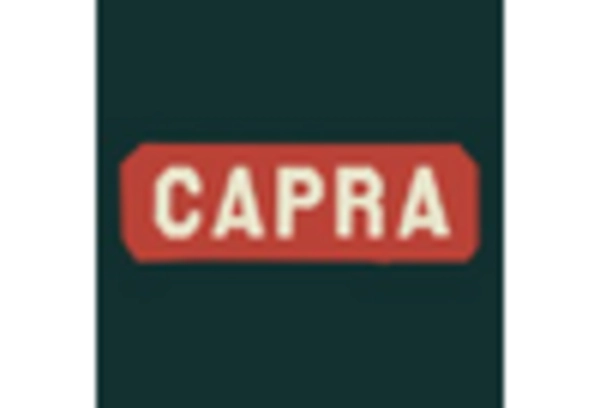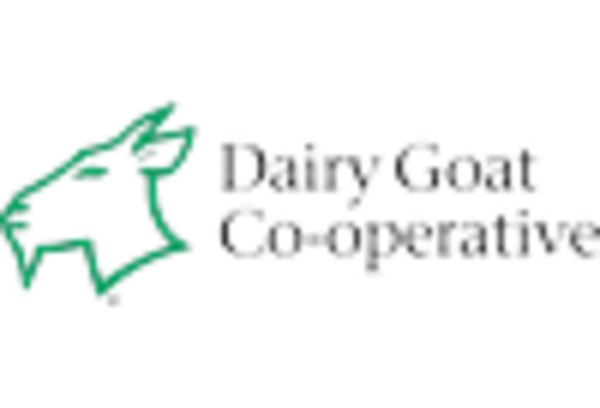Nutritional Superiority of Goat Milk
The nutritional profile of goat milk is often perceived as superior to that of cow milk, which appears to drive consumer interest in the goat milk-products market. Goat milk is rich in essential nutrients such as calcium, phosphorus, and vitamins A and D, making it a preferred choice for health-conscious consumers. Additionally, it contains smaller fat globules, which may enhance digestibility, particularly for individuals with lactose intolerance. According to recent data, approximately 65% of lactose-intolerant individuals can tolerate goat milk, further expanding its market potential. The goat milk products market is likely to benefit from this trend. More consumers are seeking alternatives that align with their dietary needs and preferences.
Rising Popularity of Specialty Diets
The increasing adoption of specialty diets, such as paleo, keto, and dairy-free, is influencing the goat milk-products market. These diets often emphasize natural and organic food sources, which aligns well with the characteristics of goat milk. As consumers become more aware of the health benefits associated with goat milk, including its lower allergenic potential compared to cow milk, the demand for goat milk products is expected to rise. Market data indicates that the specialty food sector has grown by over 20% in recent years, suggesting a favorable environment for goat milk products. This trend may encourage producers to innovate and diversify their offerings to cater to this expanding consumer base.
Growing Awareness of Lactose Intolerance
The increasing awareness of lactose intolerance among consumers is a key driver for the goat milk-products market. Many individuals are seeking alternatives to cow milk due to digestive issues associated with lactose. Goat milk, which contains lower levels of lactose, is often better tolerated by those with lactose sensitivity. As educational campaigns and health information spread, more consumers are likely to explore goat milk as a viable substitute. Market Research Future indicates that the demand for lactose-free products has risen by approximately 30% in recent years, suggesting a strong potential for goat milk products to capture this segment of health-conscious consumers.
Increased Availability of Goat Milk Products
The expansion of retail channels and online platforms is enhancing the availability of goat milk products, which is likely to stimulate growth in the goat milk-products market. As more grocery stores and specialty shops begin to stock goat milk and its derivatives, consumers are finding it easier to access these products. Additionally, the rise of e-commerce has made it possible for consumers to purchase goat milk products from the comfort of their homes. Recent statistics indicate that online grocery sales have surged, with a notable increase in the sales of niche products like goat milk. This trend suggests that improved accessibility could significantly boost consumer adoption and market growth.
Sustainability and Ethical Farming Practices
Sustainability concerns are increasingly shaping consumer choices, particularly in the food sector. The goat milk-products market stands to gain from this shift as goat farming is often viewed as more sustainable compared to conventional dairy farming. Goats require less land and water, and they can thrive in diverse environments, making them a more eco-friendly option. Furthermore, many goat milk producers emphasize ethical farming practices, which resonate with consumers who prioritize animal welfare. As awareness of environmental issues continues to grow, the goat milk-products market may experience heightened demand from consumers seeking sustainable and ethically sourced food options.

















Leave a Comment